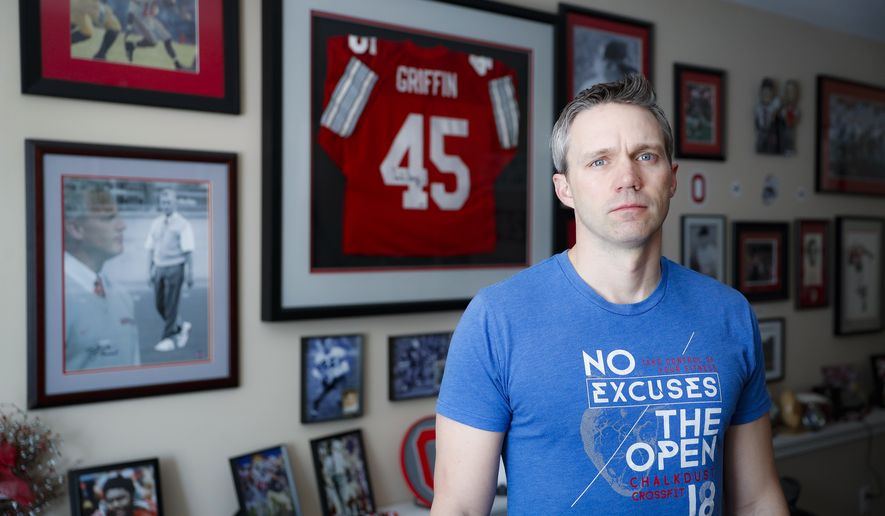Ohio State sex abuse case adds young men to the mix

By DERON SNYDER (as published in The New York Times)
Colleges claim to care about the students. The NCAA claims to care about the athletes. Coaches claim to care about the players.
But the evidence often suggests otherwise. Adults at too many institutions have caused and/or ignored too much abuse suffered by too many young people.
Leadership at Penn State looked the other way for decades as assistant football coach Jerry Sandusky committed atrocities for at least 15 years. The administration at Michigan State did nothing for two decades while Larry Nassar violated more than 300 preteen and teenage gymnasts. Officials at the University of Southern California disregarded complaints for nearly 20 years before finding that school gynecologist George Tyndall sexually harassed some of his patients, who numbered in the tens of thousands.
Now comes word that Ohio State also aided and abetted a serial sexual abuser, failing to act against Richard Strauss, who retired with honors nearly a decade before killing himself in 2005.
According to an independent investigation released last week, Strauss “abused at least 177 male student-patients,” many while he worked as a team doctor in the athletics department. Even worse, investigators determined that “University personnel had knowledge of Strauss’ sexually abusive treatment as early as 1979.”
The case is much like the others, with one huge exception: Preying on boys (Sandusky), or girls and young women (Nassar and Tyndall), is the norm in such headline-grabbing cases. But
Strauss has destroyed the stereotype by sullying some of society’s shiniest examples of strength and virility.
An attorney representing more than 50 former victims told The Associated Press that most of his clients played football at Ohio State, and some later played in the NFL.
Sexual abuse might seem more unlikely to occur when the victim is a college halfback or lineman. But that’s part of the reason it happens.
“There are major differences in the stereotypes and assumptions made about male victims,” trauma expert Christopher Anderson told Inside Higher Ed. “Among these, perhaps the biggest difference is the perception that any man who was abused must be weak, vulnerable, less of a man. In addition, if the perpetrator is male, then toxic prejudice and homophobia can be a major stigma leading many victims to stay silent.”
Turns out that females aren’t the only victims who can feel too embarrassed to speak out, fearful of damaging their reputation.
USC committed the same, worst practices that other colleges have turned to when reports of impropriety arise. “Investigations” are confined. Allegations are downplayed. Accusers are doubted. The next game and the next donation are more valuable than whomever might’ve suffered something. Schools and their athletic programs are bigger than measly would-be plaintiffs, whether the charges are against a coach, doctor or player.
The Strauss report found that 22 coaches were aware of his abuse, which included unnecessary genital fondling and rectal exams. Independent medical experts said Strauss’s exams went far beyond the standards for appropriate medical conduct. One student in the report said Strauss performed oral sex on him.
But the student said he never reported the incident because “student athletes were generally expected to be the ‘manliest of men.’” He understands that a side effect of toxic masculinity is viewing men solely as potential perpetrators – not potential victims – of sexual violence.
That’s especially true for athletes, exponentially so for football players.
It’s fair to wonder how many other institutions might be sitting on decades-old allegations, praying that accusers don’t go public like former Ohio State wrestler Mike DiSabato did in March 2018, prompting the Strauss investigation. In a statement last week, DiSabato said he was “deeply saddened to hear and relive the stories of so many others who had suffered similar abuse by Dr. Strauss while Ohio State turned a blind eye.”
Those blind eyes are costly, not just in terms of the hefty settlements and legal fees – Penn State has paid more than a quarter-billion dollars in expenses related to Sandusky – but also the price paid by victims who could’ve been spared if institutions responded appropriately.
In an email to students, faculty and staff last week, Ohio State president Michael V. Drake outlined several safeguards that have been implemented in the 20 years since Strauss left the school, adding that the “institution’s fundamental failure to prevent this abuse was unacceptable – as were the inadequate efforts to thoroughly investigate complaints.”
It’s a familiar story by now, but with a twist:
Though we’ve barely come to grips with the intricacies of sexual assault against women, we must add men to the conversation.
— Brooklyn-born and Howard-educated, Deron Snyder writes his award-winning column for The Washington Times on Tuesdays and Thursdays. Follow him on Twitter @DeronSnyder.
 Follow
Follow
